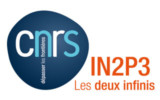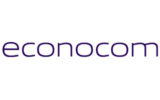Data centers: conditional TICFE (Domestic tax on final electricity consumption) reduction as of 1st January 2022
The 2021 Finance Act changes the energy taxation of data centers from 1st January 2022: eligibility for a TICFE tax rebate is to become conditional on the adoption of an energy management system and adherence to an official benchmark of good practices in the field of energy. What can be done now to continue to benefit from exemptions in 2022?
TICFE reductions: current conditions of applicability
A brief reminder: an electricity bill can be broken down into three main components. Approximately half of the costs are for the supply of electricity per se (contract and consumption); the other half is divided between energy transmission (approximately 20%) and taxation (approximately 30%), almost all of which is represented by the Domestic Tax on Final Electricity Consumption (TICFE).
This tax, introduced in 2004 under the acronym CSPE (Contribution au Service Public de l’Électricité or Contribution to the Public Electricity Service) and renamed in 2016, is intended to finance spatial equalization (smoothing electricity costs for all, including in hard-to-reach areas) and the development of renewable energy (wind, hydraulic and solar). Since 2016, this tax has been set at €22.5/MWh.
Since 2018, data centers have been entitled to a reduction in this tax, subject to eligibility calculated on the basis of the cost of the TIFCE in proportion to the added value of the data center. If it is eligible, a digital data storage center benefits from a specific TICFE calculation, at full rate for the first GWh, and at €12/MWh beyond.
In concrete terms, for a data center with an available IT installed capacity of 2 MW and a load factor of 50%, for which annual electricity consumption is 17.6 GWh, a TICFE reduction represents a substantial saving of almost €175,000.
[Addendum: TICFE tariffs applicable from February 1, 2022 to January 31, 2024]
As of February 1, 2022, a “tariff shield” system has been introduced to limit the rise in regulated electricity tariffs. As a result, all TICFE tariffs are reduced to the minimum thresholds stipulated by the European Energy Directive, i.e. €0.5/MWh for businesses and €1/MWh for individuals and similar.
Decree no. 2022-84 of January 28, 2022 on the reduction of electricity excise tariffs details these new tariffs, applicable until January 31, 2024.
New conditions of eligibility for TICFE exemptions
However, access conditions will change as of 1st January 2022. The 2021 Finance Act provides for this allowance to be subject to two criteria. Firstly, the implementation of an ISO 50001 energy management system, attesting to a continuous improvement approach (consumption analysis and identification of points for improvement).
At the same time, the company operating the data center will have to adhere to a program of good energy management practices, recognized by a national or international public authority. This includes eco-designing the data center, optimizing energy efficiency, monitoring and reporting energy consumption, and implementing energy-efficient cooling technologies, such as free cooling for example.
Adherence to the European Code of Conduct for Data Centers meets the latter eligibility criterion. This framework, steered by the European Commission and updated annually, defines 158 good practices based on seven themes (IT equipment and services, cooling, electricity chain, etc.) split into two categories: mandatory good practices and optional good practices.
A certification that is now mandatory and financially encouraged
The implementation of an energy management system, the basic principles of which include governance, energy audit, monitoring and continuous improvement, brings substantial gains in commercial, operational and economic terms. It helps enhance the value of the actions undertaken, particularly with external parties (partners, customers), while also providing tools, methods and organizations for a sustainable acceleration in performance.
Although the deadline of 1st January 2022 seems close, the implementation of an energy management system from scratch in accordance with the ISO 50001 standard is entirely conceivable. In total, the overall workload can be estimated at 40 to 100 man-days of six to nine months for a complete cycle, from risk analysis to the certification audit, including strategy and governance definition phases, deployment and performance monitoring implementation.
This objective can be achieved by a very large majority of data center operators, who have already initiated the process for economic or business reasons, and should rapidly achieve official certification.
To encourage companies to obtain ISO 50001 certification, it should be noted that the ATEE (Association Technique Énergie Environnement or Technical Energy and Environment Association) has set up a dedicated support system, available until October 2022. This system takes the form of a subsidy, intended to cover the costs of certification support services, which can amount to 20% of the annual energy expenditure of certified sites, capped at €40,000. A major boost for data center operators to facilitate and guarantee the success of their ISO certification process.





















